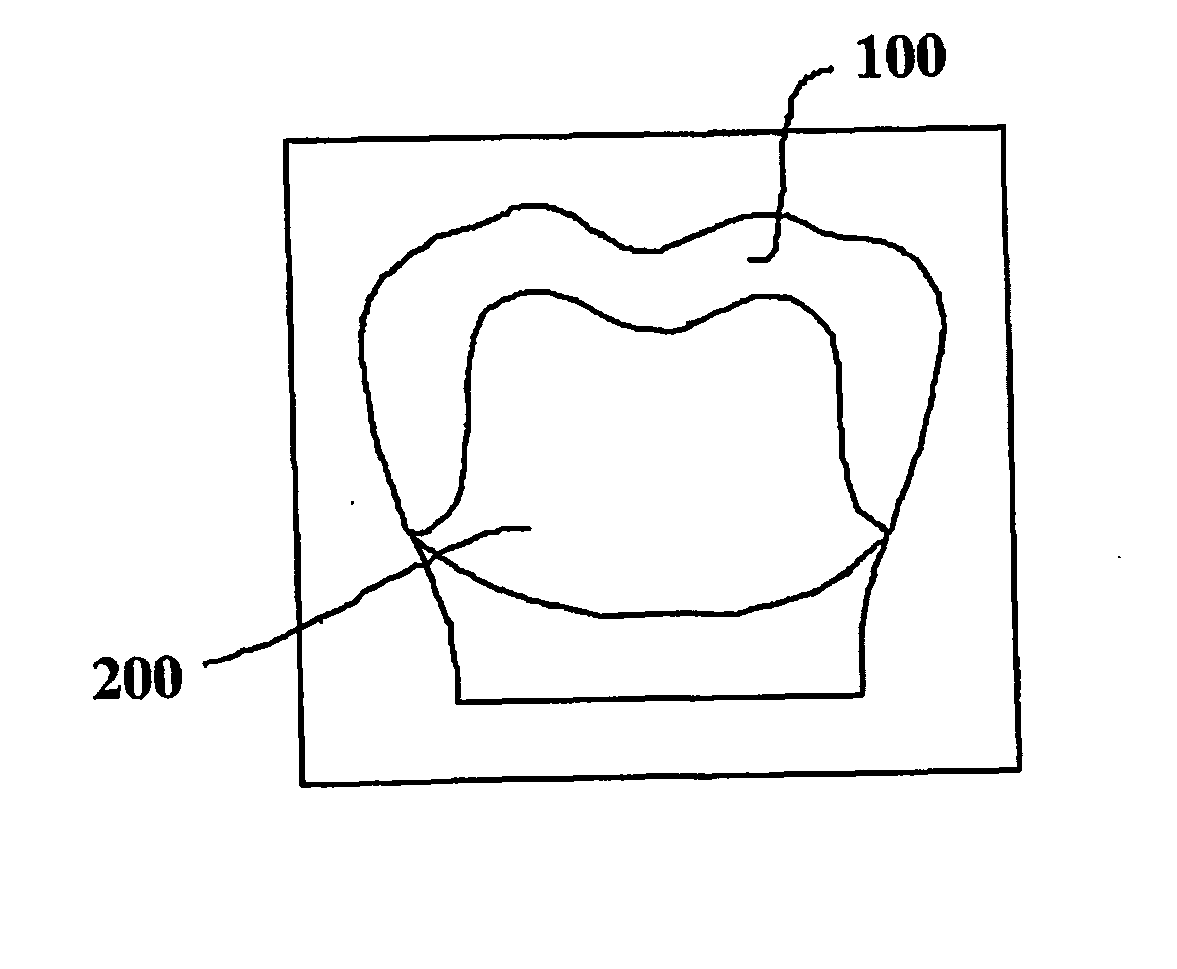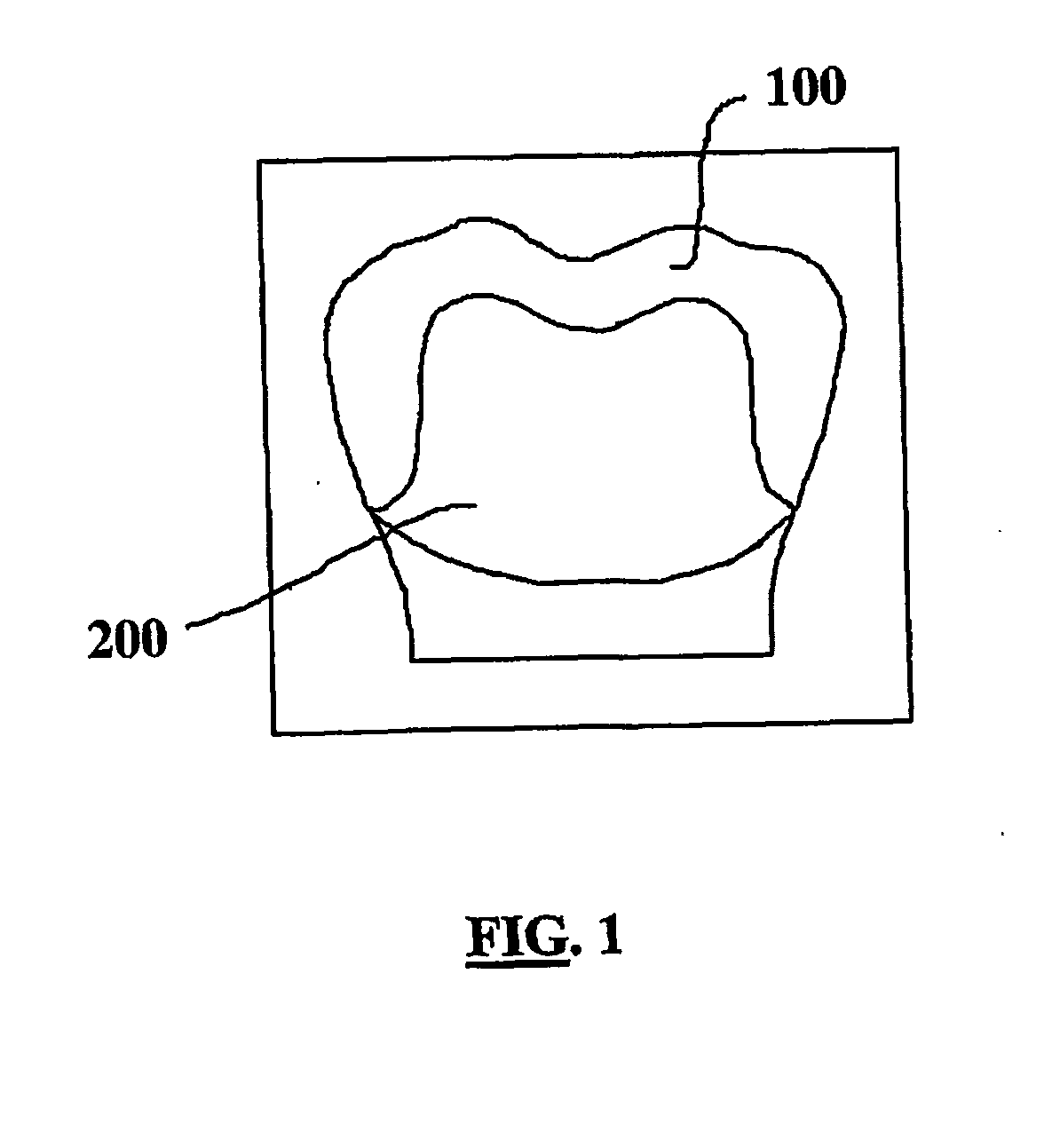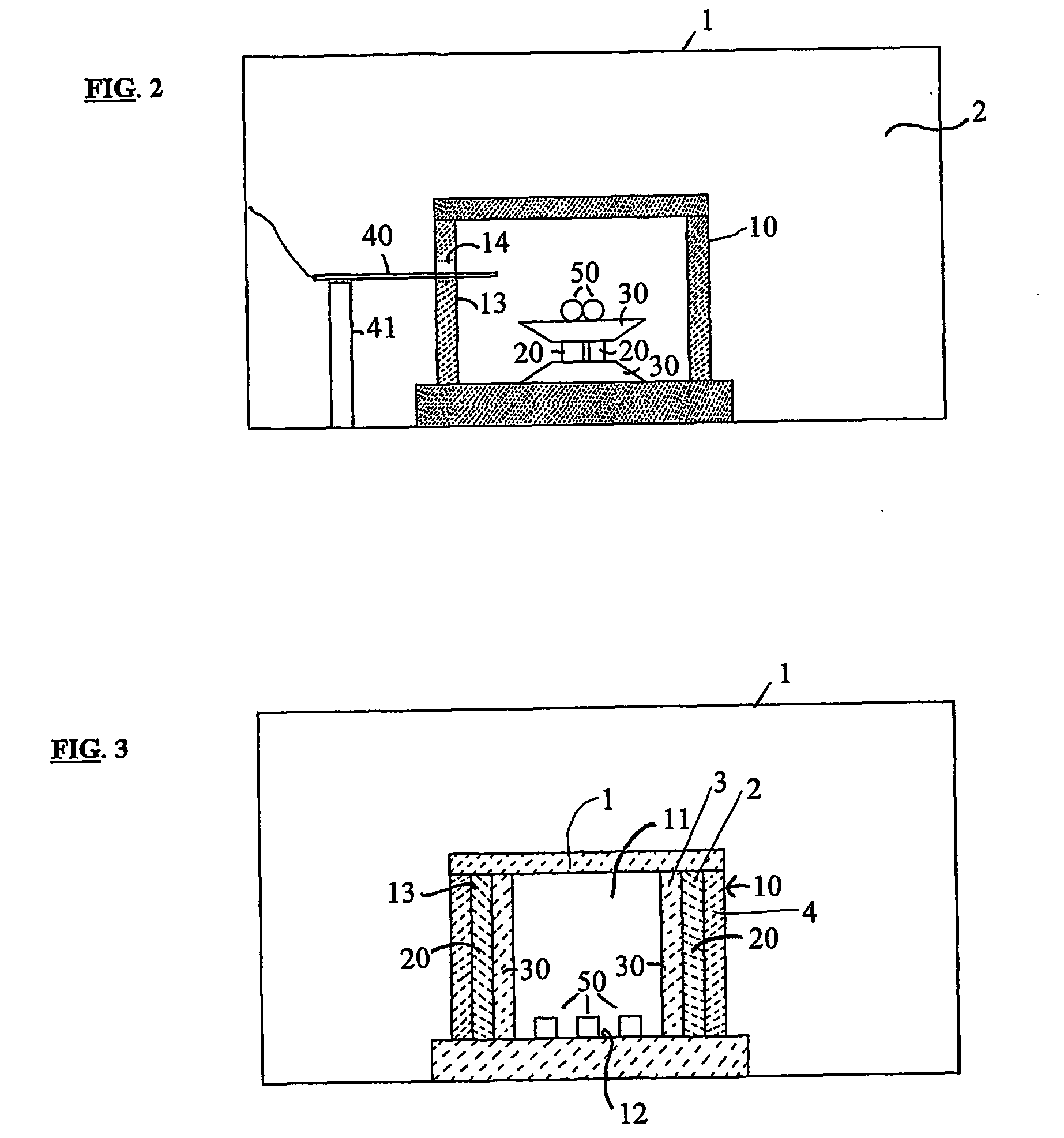Method of microwave processing ceramics and microwave hybrid heating system for same
a technology of microwave processing and ceramic materials, which is applied in the direction of electric/magnetic/electromagnetic heating, lighting and heating apparatus, etc., can solve the problems of metal teeth not having an aesthetically pleasing appearance, crowns may break, and difficulty in adjusting the crowns, so as to reduce the sintering time
- Summary
- Abstract
- Description
- Claims
- Application Information
AI Technical Summary
Benefits of technology
Problems solved by technology
Method used
Image
Examples
experiment 1
Microwave Sintered vs. Conventionally Sintering for Zirconia Dental Ceramics
[0088] Zirconia cylinders stabilized with 3 mol % yttria, which are analogous to dental copings, were sintered in the microwave furnaces at various temperatures and compared with conventionally sintered samples that were fired at 1450° C. The properties of the microwave-sintered samples that were fired at a higher ramp rate were compared to the relatively slow ramp rate used in conventional sintering. The density, hardness and indentation fracture toughness of the samples that were microwave-sintered at temperatures of 1400° C. and 1450° C. compared well with the conventionally sintered samples. The average microstructure of the microwave-sintered samples had less voids, more uniform grain size distribution than that of the conventionally sintered samples owing to volumetric heating phenomenon.
[0089] Zirconia stabilized with 3 mol % yttria (TOSOH, Japan) powder was uniaxially pressed (...
experiment 2
Microwave Sintered Ceramic Coated Copings vs. Conventionally Sintered Ceramic Coated Copings
[0163] Zirconia dental copings, stabilized with 3-mol % yttria, were layered with dental glass ceramic shades and sintered in a conventional dental lab furnace and in the microwave hybrid heating system furnace. Excellent aesthetic results were obtained by microwave sintering in shorter periods of time with rapid ramp rates compared to the relatively slow conventional heating rates.
[0164] The microstructure included uniform crystal distribution in the glassy matrix for the teeth sintered gradually as compared to the rapid sintering by microwave. However, the degree of crystallinity of the gradually fired microwave sample is higher than those of rapidly fired samples. Thus, by varying the dwell time, the size and amount of crystalline phase can easily be controlled during the sintering process.
[0165] Indentation hardness and fracture toughness measurements were conducted under HV0.5 and HV0...
PUM
| Property | Measurement | Unit |
|---|---|---|
| thickness | aaaaa | aaaaa |
| time | aaaaa | aaaaa |
| time | aaaaa | aaaaa |
Abstract
Description
Claims
Application Information
 Login to View More
Login to View More - R&D
- Intellectual Property
- Life Sciences
- Materials
- Tech Scout
- Unparalleled Data Quality
- Higher Quality Content
- 60% Fewer Hallucinations
Browse by: Latest US Patents, China's latest patents, Technical Efficacy Thesaurus, Application Domain, Technology Topic, Popular Technical Reports.
© 2025 PatSnap. All rights reserved.Legal|Privacy policy|Modern Slavery Act Transparency Statement|Sitemap|About US| Contact US: help@patsnap.com



